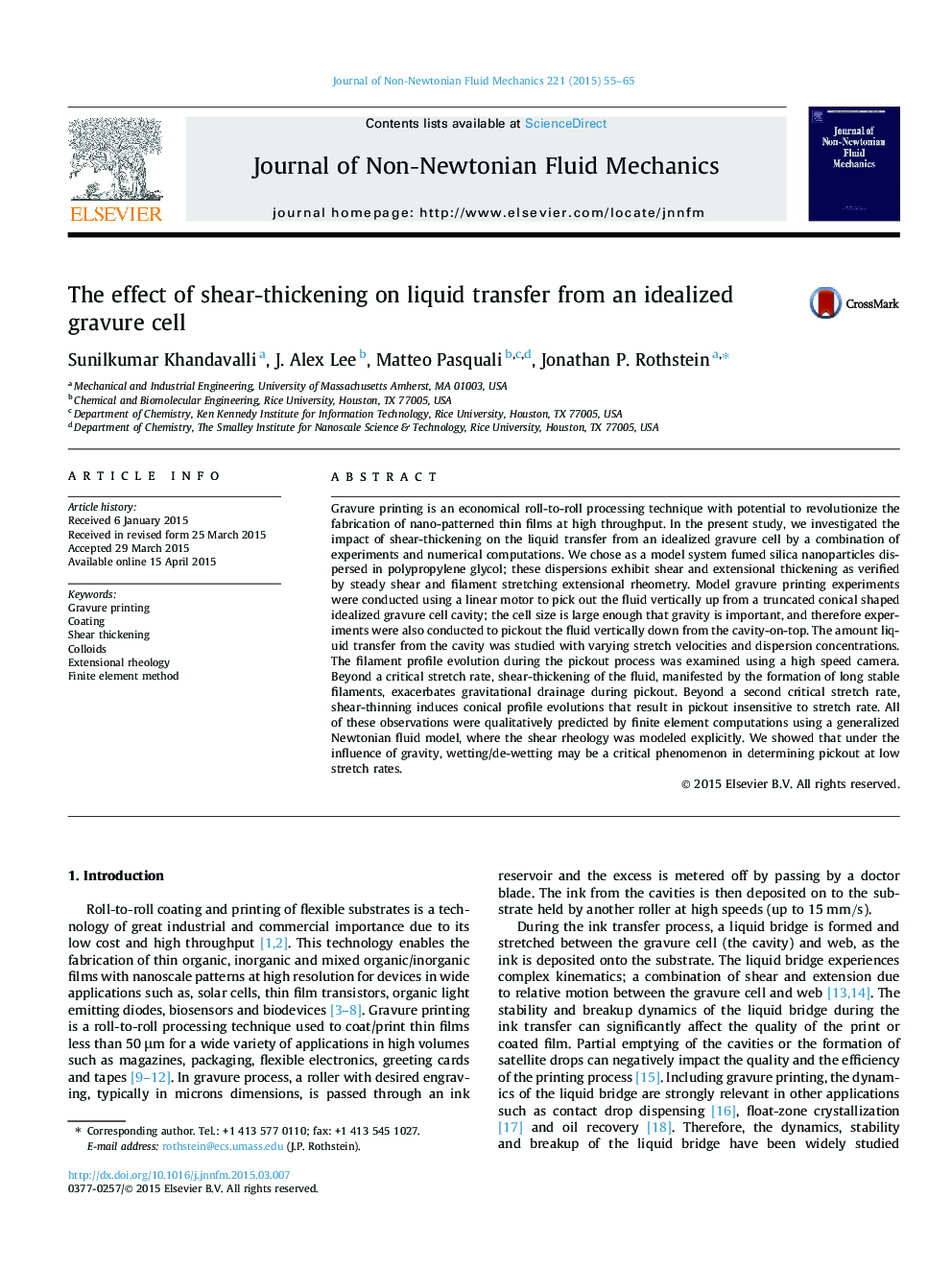| Article ID | Journal | Published Year | Pages | File Type |
|---|---|---|---|---|
| 7061364 | Journal of Non-Newtonian Fluid Mechanics | 2015 | 11 Pages |
Abstract
Gravure printing is an economical roll-to-roll processing technique with potential to revolutionize the fabrication of nano-patterned thin films at high throughput. In the present study, we investigated the impact of shear-thickening on the liquid transfer from an idealized gravure cell by a combination of experiments and numerical computations. We chose as a model system fumed silica nanoparticles dispersed in polypropylene glycol; these dispersions exhibit shear and extensional thickening as verified by steady shear and filament stretching extensional rheometry. Model gravure printing experiments were conducted using a linear motor to pick out the fluid vertically up from a truncated conical shaped idealized gravure cell cavity; the cell size is large enough that gravity is important, and therefore experiments were also conducted to pickout the fluid vertically down from the cavity-on-top. The amount liquid transfer from the cavity was studied with varying stretch velocities and dispersion concentrations. The filament profile evolution during the pickout process was examined using a high speed camera. Beyond a critical stretch rate, shear-thickening of the fluid, manifested by the formation of long stable filaments, exacerbates gravitational drainage during pickout. Beyond a second critical stretch rate, shear-thinning induces conical profile evolutions that result in pickout insensitive to stretch rate. All of these observations were qualitatively predicted by finite element computations using a generalized Newtonian fluid model, where the shear rheology was modeled explicitly. We showed that under the influence of gravity, wetting/de-wetting may be a critical phenomenon in determining pickout at low stretch rates.
Related Topics
Physical Sciences and Engineering
Chemical Engineering
Fluid Flow and Transfer Processes
Authors
Sunilkumar Khandavalli, J. Alex Lee, Matteo Pasquali, Jonathan P. Rothstein,
